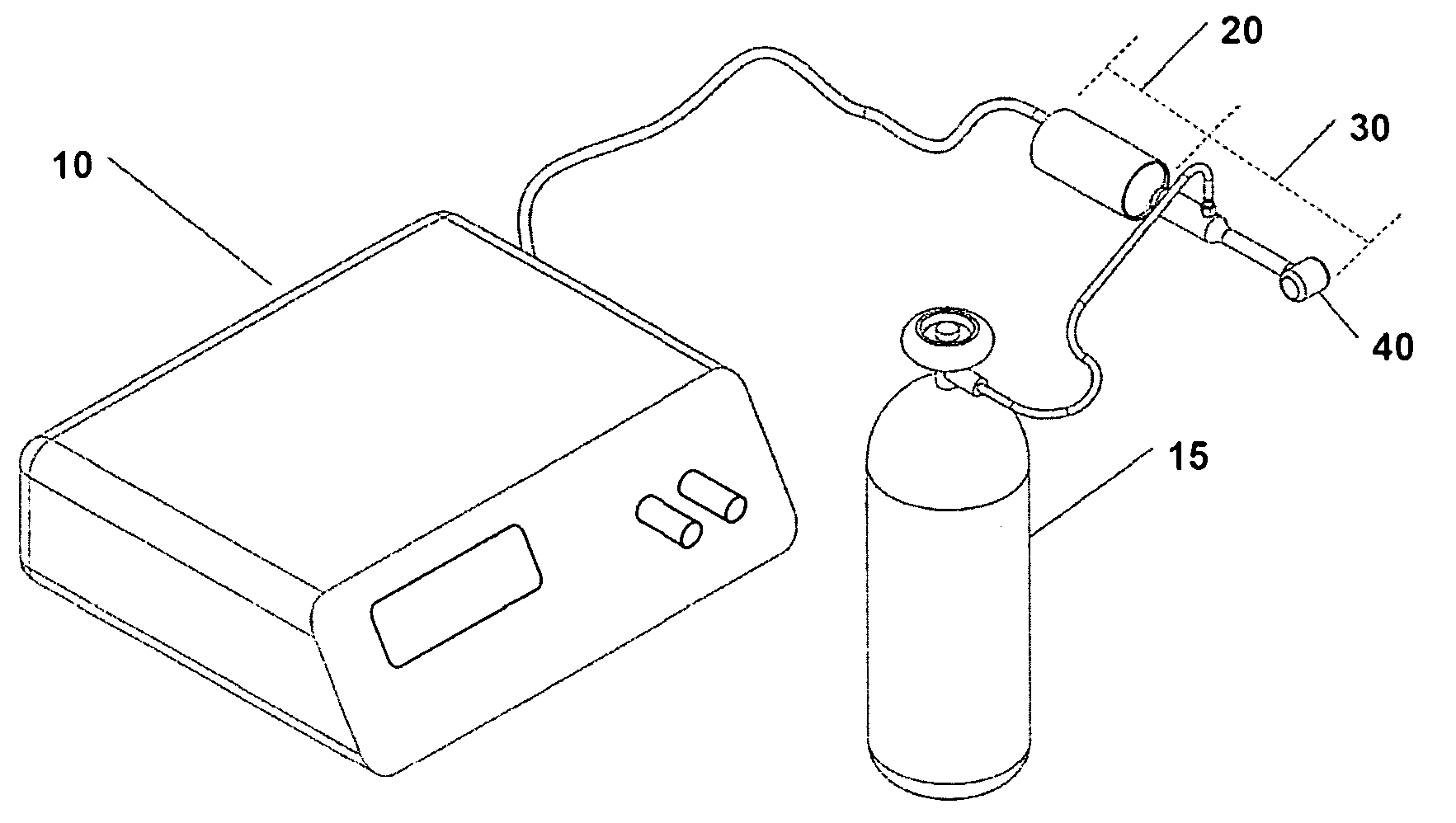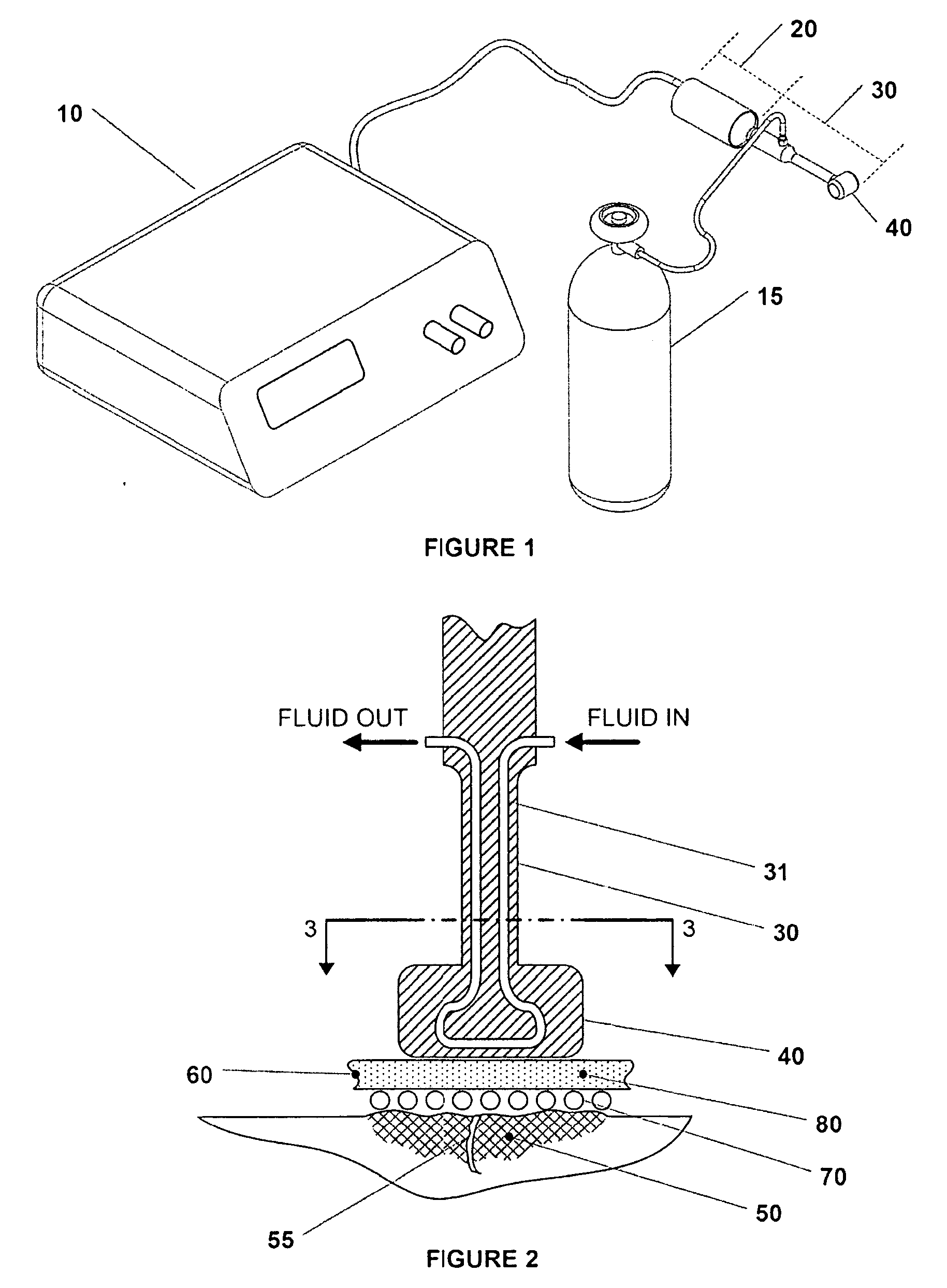Ultrasound assisted tissue welding method
a technology of assisted tissue welding and ultrasound, applied in the field of ultrasound assisted tissue welding, can solve the problems of increasing the irritation of surrounding tissue, increasing the stress and trauma of surrounding tissue, and requiring significant skill and time-consuming to apply
- Summary
- Abstract
- Description
- Claims
- Application Information
AI Technical Summary
Benefits of technology
Problems solved by technology
Method used
Image
Examples
Embodiment Construction
[0027]A general view of an embodiment of the present apparatus is shown in FIG. 1. The present invention relates to devices and methods for the use of ultrasonic energy to closing and sealing wounds. The invention is applicable to wounds resulting from surgical incisions on skin as well as incisions on internal organs. Highly controllable, precise delivery of ultrasonic energy allows optimal sealing of tissue wounds without damaging surrounding tissue.
[0028]FIGS. 1-5 relate generally to describe the invention in some of its embodiments. The apparatus of the present invention may be a hand held device with a housing surrounding an ultrasound transducer 20 as shown in FIG. 1. The housing provides a surface for the surgeon to hold for manipulation of the device over the wound. The housing also may provide dampening and isolation so that the heat, electrical and mechanical energy emitted from the ultrasound transducer 20 does not reach the operator of the device. The ultrasound transduc...
PUM
 Login to View More
Login to View More Abstract
Description
Claims
Application Information
 Login to View More
Login to View More - R&D
- Intellectual Property
- Life Sciences
- Materials
- Tech Scout
- Unparalleled Data Quality
- Higher Quality Content
- 60% Fewer Hallucinations
Browse by: Latest US Patents, China's latest patents, Technical Efficacy Thesaurus, Application Domain, Technology Topic, Popular Technical Reports.
© 2025 PatSnap. All rights reserved.Legal|Privacy policy|Modern Slavery Act Transparency Statement|Sitemap|About US| Contact US: help@patsnap.com



